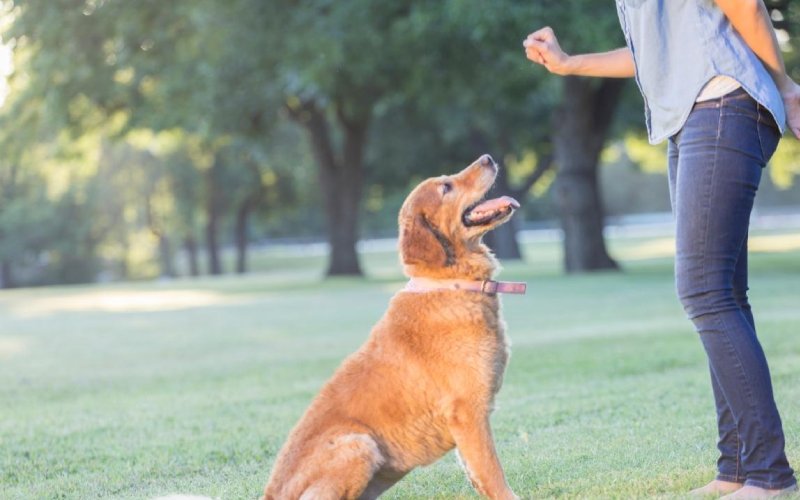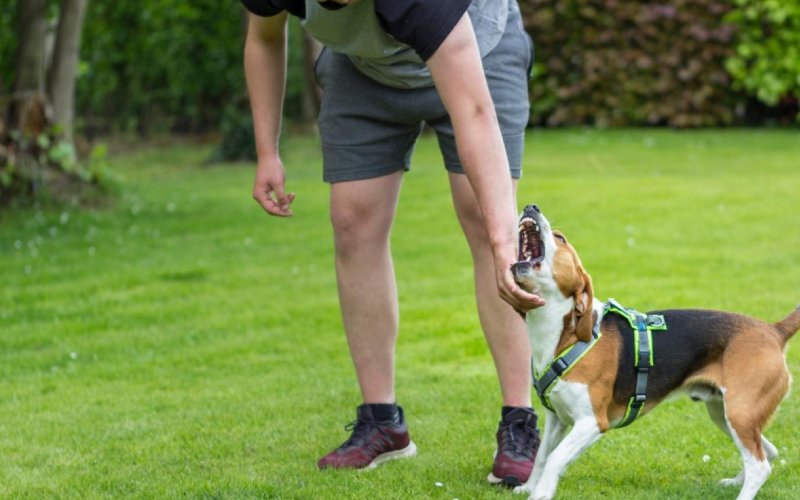This is something that we get alot of calls about. Here is a brief synopsis of Human Aggression. olk9dfw.com
Human aggression is a tricky thing. It’s all about those strong feelings of anger or hostility that can end up causing trouble or hurting others. It shows up in different ways, from arguing to actual fighting. But what’s interesting is figuring out how this human trait connects to our furry friends. We’ve had a long history with dogs, but understanding aggression in our shared lives is still something we’re really curious about.
As we pull apart the different layers of why people can be aggressive, we’re going to look at how it affects dogs. These four-legged pals might just reflect our feelings more than we think. Keep following along as we dive deep into how humans and their loyal dogs act and react to each other’s emotions.
Human aggression is when someone wants to hurt or cause pain to another. It’s a mental state that can turn into physical actions, harsh words, or even less direct methods. When thinking about how we act around dogs, it’s really important to understand how our aggressive sides might show up. This is because dogs are really good at picking up on what we do and how we feel, and they can start to act the same way they see us acting.
Types of Human Aggression
Aggression doesn’t just come in one form; it has many different looks. We can talk about two main kinds: impulsive and instrumental aggression.
- Impulsive aggression is quick and full of strong feelings, kind of like a spark in a tinderbox – it happens fast and without much thinking.
- Instrumental aggression is different; it’s more calculated and used on purpose to get something.
When you put these types of aggression into situations with dogs, it makes things a lot more interesting.
Here’s a table to break it down further:
| Impulsive Aggression | Instrumental Aggression |
| Reactive and spontaneous | Pre-meditated and planned |
| Driven by emotion, not by a goal | Goal-oriented, often for control or dominance |
| May result in unintended harm to dogs | Can lead to training methods that are too harsh |
| Examples: Yelling at a dog out of frustration | Examples: Using intimidation to teach a dog commands |
| Can cause dogs to become fearful or anxious | May lead to a dog’s decreased trust in humans |
Recognizing Signs of Aggression
Identifying aggression in people is key—it matters for our safety and the dogs we live with. Keep an eye out for these warning signs:
- Scowling or Staring: What might look like a small frown to us could be a big red flag to a dog, telling them trouble might be coming.
- Raising Your Voice: Since dogs are really tuned into how we sound, yelling can scare them and might make them react out of fear.
- Standing Over Them: If you stand too tall or get in their space, dogs might think you’re starting trouble and feel like they have to stand up for themselves.
- Sharp Movements: Quick moves or harsh waves can set off a dog’s instincts to either put up a fight or run away.
- Ignoring Them: It doesn’t seem mean, but not paying attention to a dog can upset them, making them feel lost and stressed out.
Getting these signals and knowing what they do to dogs helps us live together better, making sure we’re not accidentally scaring our four-legged pals with the things we do without talking.
Aggression in Dogs
Diving into the issue of aggression, it’s key to realize the impact our actions can have on our dog’s mental state. We’re going to look at how dogs see human aggression and clear up some wrong ideas about aggression linked to certain breeds.
The Canine Response to Human Aggression
Dogs, with their sharp senses and tendency to empathize, pick up on our feelings, including aggression. They might reflect what we feel, and when they sense aggression in us, it can scare them or make them nervous.
Here’s what they might do in response to our aggressive actions:
- Hunching down or hiding their tails: This means they’re scared or trying to show they don’t want to cause trouble.
- Growling or showing teeth: This could be a warning that they feel cornered and might need to defend themselves.
- Staying away: Sometimes, dogs prefer to keep their distance from someone aggressive as a way to stay safe.
- Licking a lot or moving around too much: These can be signs that they’re feeling stressed or anxious.
- Not eating like usual: Aggression can mess with their appetite or change the way they eat.
These behaviors aren’t just automatic responses—they can turn into long-term problems if a dog keeps running into aggressive behavior.
Breed-Specific Aggression and Misconceptions
Thinking that certain breeds are naturally more aggressive is a common but incorrect belief. Different breeds might indeed have more energy or a unique temperament, but aggression isn’t a one-size-fits-all trait within a breed. What shapes a dog’s behavior are their own experiences and the training they receive. Acknowledging this helps us move past harmful labels and become better, more understanding dog owners.
Causes of Aggression
Moving forward, let’s dig into the roots of aggressive behavior. It’s key to understand where aggression comes from to lessen its effects on both humans and dogs.
Biological Factors in Humans and Dogs
Aggression often comes from a mix of biological aspects. Let’s take a side-by-side look at how these things show up in humans and dogs:
| Biological Factors | Humans | Dogs |
| Brain Chemistry | Imbalances in neurotransmitters | Similar imbalances can affect mood and behavior |
| Genetics | Genetic predispositions to aggression | Breed-specific traits can influence temperament |
| Hormones | Testosterone levels linked to aggression | Hormonal influences can affect aggression levels |
| Neurological | Brain injuries or abnormalities | Brain development and injuries can lead to aggression |
| Sensory Processing | Sensory overloads can trigger aggression | Overstimulation can provoke defensive behaviors |
These biological bits and pieces are the puzzle pieces that help us piece together the “why” behind some behaviors and the way humans and dogs interact.
Psychological and Environmental Factors
Mental wellness and surroundings are just as critical as biology when it comes to why dogs may show aggressive behaviors. Here’s a look at the indirect ways these elements can shape a dog’s actions:
- Stressful Home Environment: A home full of tension can make dogs anxious, leading to them being on edge or shutting down.
- Lack of Socialization: When people aren’t really connected socially, they might not give their dogs enough chances to be around others, which can make dogs scared or aggressive.
- Inconsistent Training: If training isn’t consistent, it means there’s no clear routine, leaving dogs confused and sometimes aggressive.
- Traumatic Experiences: Dealing with trauma can lead to humans acting out in ways that are hard for dogs to understand, making life stressful for them.
- Neglect or Abuse: Dogs that face neglect or harsh treatment might turn aggressive just to get by.
By realizing the impact of these mental and place-based pressures, we can work towards creating better and kinder environments for both people and dogs. This way, we build relationships that are based on both sides understanding and respecting each other.
Managing and Preventing Aggression
Navigating through the complex issue of aggression, it’s crucial to tackle not only the ‘what’ but also the ‘how’—how we effectively handle and reduce such behaviors for the safety and happiness of both people and dogs.
Strategies for Humans
Key to lessening aggressive tendencies is managing our own emotions and stress. It begins with knowing what sets off aggression and realizing when it’s time to get help.
Here’s what can be done to keep emotions in check and minimize aggressive reactions:
- Embrace Mindfulness: Find your calm through meditation or breathing exercises.
- Consistent Exercise: Use physical activities to burn off energy and lower stress.
- Constructive Communication: Talk about your feelings without letting the situation get worse.
- Efficient Time Management: Plan your tasks well to avoid the pressure of last-minute hustle.
- Professional Guidance: If aggression keeps up, seeing a therapist or counselor is a wise move.
Training and Socialization for Dogs
Training and socializing our canine pals are key to staving off aggressive behaviors. Usually, a dog that’s been trained well acts well. Here are some strategies and actions that can aid in the training process:
- Positive Reinforcement: Always reward your dog when they do something good. Treats or a bit of praise works wonders in making sure they repeat that good behavior.
- Consistent Training Sessions: Keep training regular and brief. This helps dogs learn what they should and shouldn’t do.
- Socialization Activities: Let your dog meet different people and animals, and get used to various places. This boosts their confidence and eases their fears.
- Obedience Classes: These classes, led by professional dog trainers, can teach your dog proper behavior in a variety of settings.
- Avoid Only Punishment-Based Methods: Such methods can scare your dog and make them lash out. Balanced Training is the way to go instead.
Conclusion
The interplay between human and canine aggression is complex and tightly linked. As guardians of our pets, we must be aware of how our own actions affect our dogs. If we handle our aggression well and invest in the right training and socializing for our dogs, we can grow a bond based on both sides respecting and understanding each other. We should pledge to be the best humans for our dogs. After all, they rely on us to lead the way and be their companions in a world that they traverse right alongside us.
972-372-9225
[email protected]
olk9dfw.com



